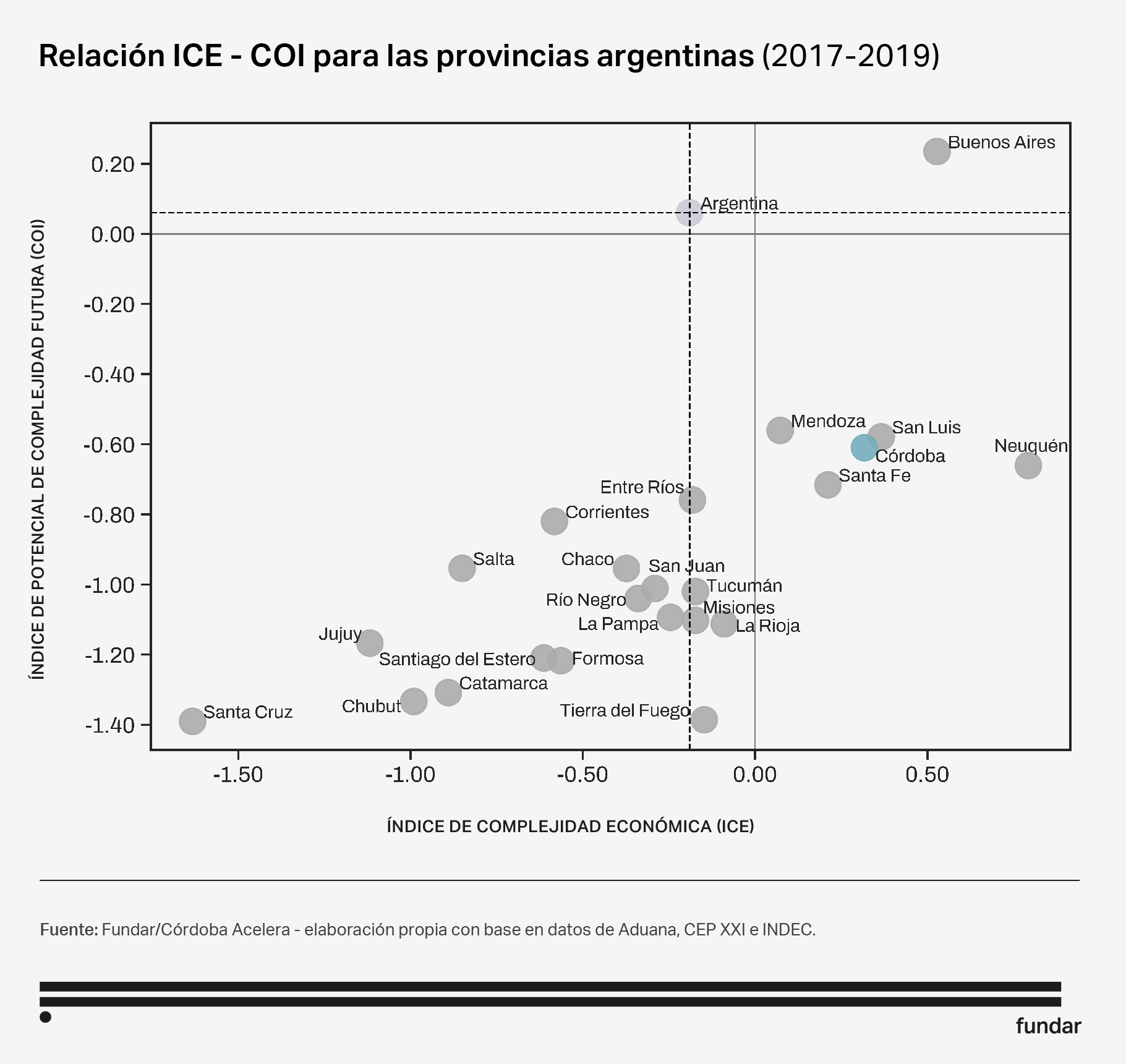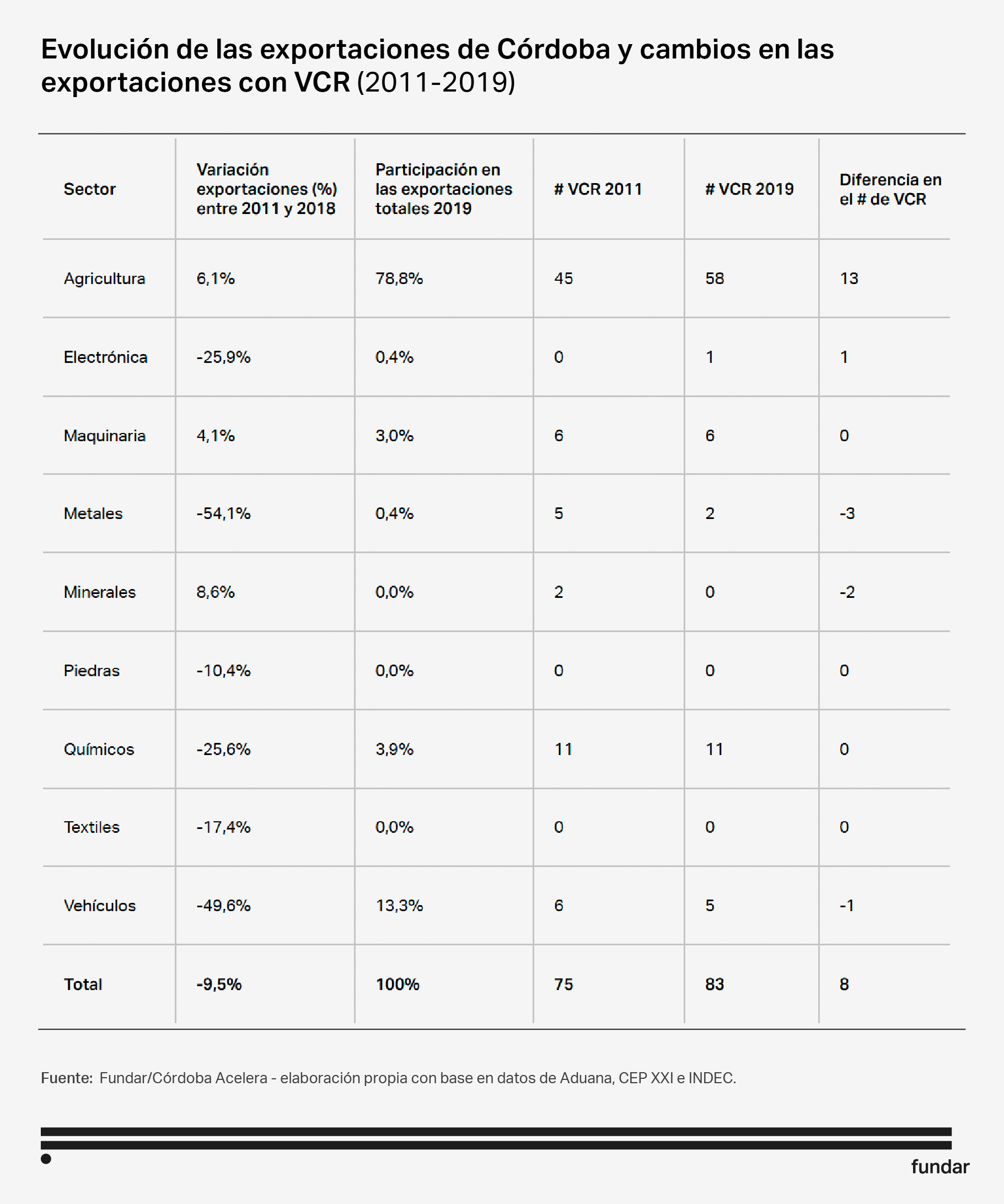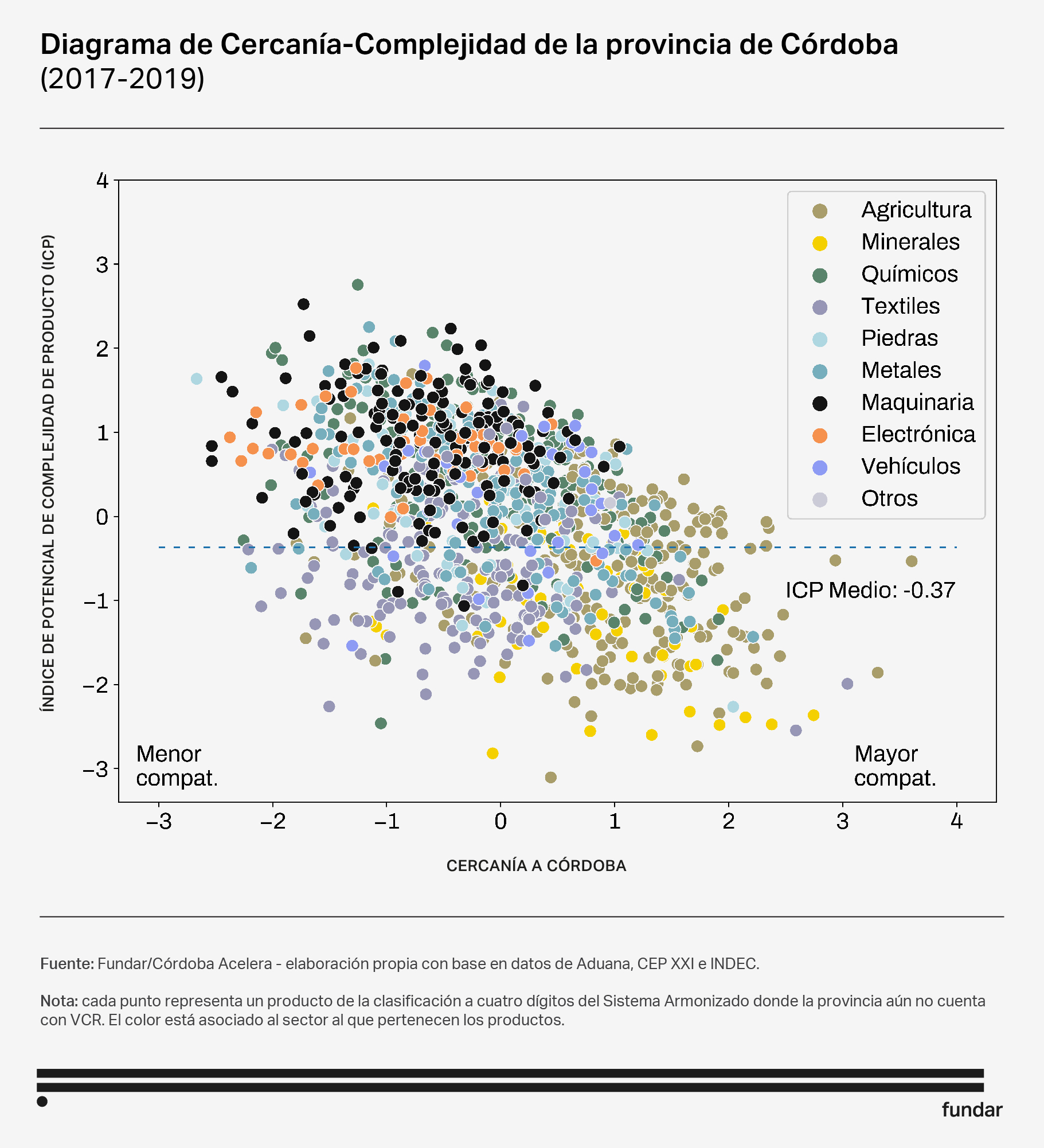The capabilities of a province give us a clue to its wealth: they are the engine of production and development. And economic complexity can tell us which sectors need to be boosted to promote this development. How does this translate into public policies? This document analyzes and projects the opportunities of the province of Córdoba.
How does a city, province or country decide what to produce? A society’s capabilities and knowledge can be measured based on the products it exports. The more diverse, sophisticated and unique the exports, the more complex its economy. The series of documents “Productive opportunities for the City of Córdoba: an approach based on Economic Complexity” uses this method to analyze and propose productive opportunities in Córdoba.
What is Economic Complexity?
Every country is capable of producing a great diversity of products. To do so, it requires a wide range of productive knowledge. The more complex a product is, the more capabilities are required to produce it. In turn, these have to be coordinated in the most effective possible way among a greater number of stakeholders.
Economic Complexity is a measure that allows us to evaluate a society’s knowledge and productive capacity based on the products it produces. It is calculated from the diversity of exported products and the number of countries capable of producing them. This metric provides valuable tools to identify productive opportunities and foster socio-economic development.
This paper is part of a broader study focused on the application of the Economic Complexity method to the city of Cordoba. The study is broken down into two stages and will be presented in a series of three papers. This first article shows the findings of the initial diagnostic phase. It highlights and quantifies the knowledge and capabilities of the province of Cordoba, comparing them with other global economies. It is supplemented by a second paper that presents the same diagnosis, this time for Córdoba city. The second phase seeks to identify the productive strategic niches that the city can target strategically.
Overview of the Province's Economic Complexity
Economic Complexity Index (ECI) defines the knowledge available in a country as reflected in the goods it exports. It is calculated by weighing the complexity of the products competitively exported by any given economy.
Complexity Outlook Index (COI) is a measure of how many complex products are near a country’s current set of productive capabilities. It captures how easy it is for a country to diversify into complex production based on its economy’s existing capabilities.

A ranking of Argentina’s provinces based on their current (ECI) and potential future (COI) complexity levels puts Cordoba in the lower right quadrant, together with other provinces with ECI values above the national average (and, in the case of Cordoba, also higher than the world average) but with a negative COI value (which indicates a pace slower than the world’s average in becoming more complex).
Cordoba thus belongs to the group of provinces with an interesting complexity level, notably as a result of its promising productive trajectory in the past that led to the development of relatively sophisticated capabilities. Although it stands out in the national comparison, it may struggle to become more complex in the future due to its negative COI score.
Public policies play a key role in ensuring sustainability of this development over time, by promoting and revamping existing industries while improving competitiveness of other strategic industries absent today from Cordoba’s productive matrix.
Evolution of Cordoba's exports in the last decade
The complexity of an economy is determined by the complexity of the products it exports competitively. Any economic forecast will thus require an analysis of Cordoba’s evolution over recent years to understand its productive matrix and exports.
Revealed Comparative Advantages (RCA) may be defined as the quotient between a product’s share in a country’s exports and that same product’s share in global exports. It helps determine which of the products exported by the province constitute competitive exports.
A quick look at the evolution of exports in the province of Cordoba from 2011 to 2018 shows a 9.5% decline, in line with national average. However, this performance is not consistent across the different industries. Three of the nine industries evaluated (Agriculture, Machinery, and Minerals) experienced increases, with agricultural product exports being the best performing. Automobiles (-50%) and Chemicals (-26%) stand out among those with the deepest drops, not only in terms of magnitude but also for their significant weight in the province’s export basket.
The decline in complexity in most Argentine provinces points to underlying macroeconomic and microeconomic factors that impacted overall export dynamics. Focusing specifically on the province’s evolution, it becomes apparent that Córdoba ceased to competitively export about 15 products with significant average complexity from 2011 to 2019. Among the most complex were three from the automotive industry: vehicles for transporting people or goods, vehicle chassis, and bodies.

Future outlook: potential pathways of economic development
The Complexity-Relatedness Diagram (CR Diagram) categorizes products or activities an economy is not competitively exporting based on two dimensions:
The Complexity (ICP) or how much value a particular product contributes to future development, and its Relatedness to the existing productive matrix, or how close an economy is, given its current capabilities, to producing and exporting a certain product competitively.
Evaluating these two variables enables the identification of immediate gains, structural changes’ complexity, and smoother pathways for economies.

The CR Diagram for the province of Cordoba is presented below. It shows that products that are closely related to the current matrix are found mostly in the Agricultural and Mineral industries. However, products with higher complexity, such as Automobiles or Machinery, are also close. This suggests that the province of Cordoba currently has capabilities similar to those needed to competitively manufacture and export products in the automobile or machinery industries.
The selection of the most suitable products or activities to include in an optimal economic development strategy requires a thorough analysis of each of the province’s productive sectors, focusing especially on the firms located in the municipality of Cordoba. The second paper in the series endeavors to offer a comprehensive evaluation of Cordoba city’s complexity by outlining said analysis and diagnosis.

